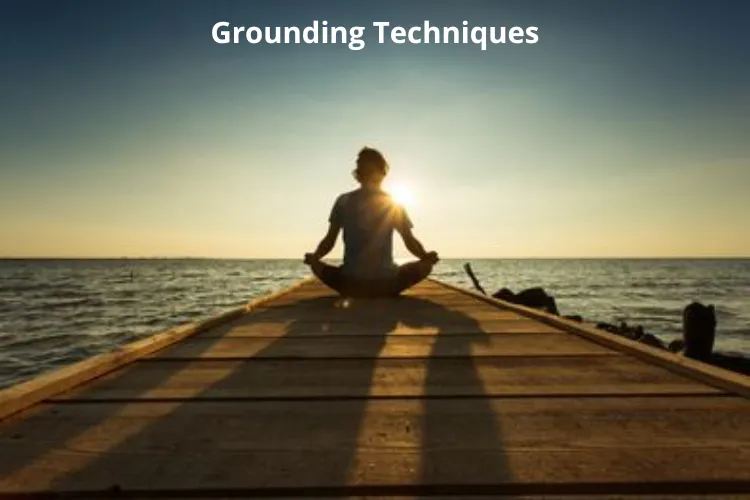Grounding Techniques to Help You Feel Grounded

As humans, feeling uneasy comes naturally to us when we are in an unfamiliar, dangerous, or high-arousal state. Does it ever feel like you are losing control of your senses? Is the fear so overpowering that you feel you are no longer displaying any emotions? Have you ever felt your heart pumping through your chest in a crazy rhythm? All this usually happens when our inner state of balance is overthrown by overpowering thoughts and feelings, which makes it behaviorally challenging for us to look beyond and feel connected to ourselves while in a state of high arousal. However, Grounding Techniques allow us to break the cycle of feeling miserable about our state.
Before learning different techniques that are available through resources like pdfs, in a clinic, or in books, let’s first understand what Grounding is and where it originate from.
What is Grounding?
Lowen (1958/1979), one of the earliest bodily psychotherapists, pioneered the notion of Grounding in his 1976 book “Bioenergetics.” Grounding indicates the psycho-physical presence in the “now and now” in connection to the degree of physical and emotional support provided by the ground (the capacity to be “down to earth”). When you’re having a difficult day or coping with a lot of stress, overwhelming feelings, and/or acute anxiety, Grounding is a self-soothing skill to apply. Grounding is a technique that aids you stay in the current moment and realign yourself to the here-and-now and reality. It can also serve as a distraction from the problems you’re facing and is considered to be a variant of mindfulness.
You can also consult our online psychologist to understand grounding techniques in an effective way and easily keep out all the negative thoughts or flashbacks.
Distinction between Centering and Grounding
Centering includes the psychological and physical state of mind. If disturbed, we may feel lost or out of touch with ourselves. Centering ourselves means bringing calm to our emotions. Grounding refers to the energy field around us. In order to become grounded, one must release excess energy from the body and make room for clean energy to flow. By Grounding ourselves, we can calm or slow down our emotions and improve our connection to both our internal and external environments. We’re more mindful of our surroundings when we’re grounded.
How do Grounding Techniques Work?
In bioenergetics, the body and mind are viewed as being interconnected through the “energetic” processes that are a necessary component of life, such as breathing and the creation and expression of energy through movement. Incorporating concepts of “verticality” (contact with the ground), “contact with one’s own physicality,” emotional holding capacity, and energy discharge into the ground.” Bioenergetics includes physical “Grounding” exercises as part of the core treatment approach.
It’s normal to have flashbacks, anxiety, and other unpleasant symptoms after a traumatic event. For those who struggle with dissociation or dissociative symptoms, this is a crucial skill. Grounding Techniques aid in the regulation of these symptoms by redirecting attention away from thoughts, memories, or anxieties and back to the present moment.
Do you feel in control of yourself and your emotions? Talk to our online therapist at Ganeshaspeaks.com to feel powerful and in control.
Talk to Online Therapist
View All
List of Grounding Techniques
Grounding Techniques/skills/exercises can be useful for people undergoing anxiety, poor well-being, stress, depression, mood problems, Post Traumatic Stress Disorder, dissociation, panic attacks, and decentralization. What works for one person may become a trigger for the other, so it is essential to see what works best for each person. 3 components and techniques for each, are as follows:
PHYSICAL GROUNDING (Engages five senses or tangible objects)
- Square Breathing: Following the square (which could be anything like a square tile, window, picture frame, etc.) with the tip of your finger, breath in through your nose and out through your mouth. Focus on sensations in your body as your breath changes.
- Grounding Objects: Any object that you can touch or feel and carry around with you everywhere. This could be something that you feel very connected to. Answer a few questions in your mind like’ what is it made of? Is it heavy or light?
MENTAL GROUNDING (Concentrates and engages our mind to cope with thoughts related to anxiety, distress, or discomfort while being present.)
5-4-3-2-1 or 5 Senses Model: Uses 5 senses to ease your state of mind so that you can get though stressful moments.
- Recognize 5 things that you can see around you.
- Recognize 4 things that you can touch around you.
- Recognize 3 things that you can hear around you.
- Recognize 2 things that you can smell around you.
- Recognize 1 thing that you can taste around you.
SOOTHING GROUNDING (Being mindful of our body sensations and stimulate our thoughts to promote good feelings.)
- Think of your favourite animal, season, song, person or a movie.
- Smell your favourite scent or lotion.
- Write kind notes to yourself.
- Keep a collection of inspiring or comforting poems, song’s lyrics or quotes.
- Say kind and coping statements to yourself, some of the examples could look like:
- I am a good person
- I am strong
- I can handle this
- This feeling will pass
- I am enough
The healer you have been looking for is your own courage to know and love yourself completely. ~ Yung Pueblo
Anxiety can steal your peace of mind. Let our wellness experts of Ganeshaspeaks help you address your anxieties.










